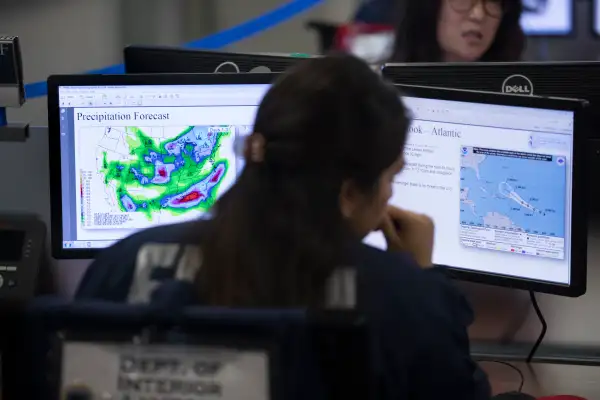President Trump's Budget Would Cut Hundreds of Millions From Disaster Relief Programs

When President Trump released his proposed budget earlier this year, it included cuts across the board — including hundreds of millions from programs that help Americans cope with disasters like Hurricane Harvey.
Throughout last fall's election, President Trump called for cutting billions in waste out of Washington. The White House's proposed fiscal 2018 budget, released this past May, attempts to make good on those promises. Hefty cuts are proposed for the Federal Emergency Management Agency (FEMA), the agency charged with overseeing the government's response to natural disasters, as well as the National Weather Service and the government's flood insurance programs.
Here's specifically what the Trump budget proposes:
- $667 million from FEMA targeting grants that help state and local governments prepare for natural disasters and other emergencies like terrorist attacks. The budget would also require 25% cost matching for preparedness grants. Modeled on FEMA's existing disaster recovery grants, the provision is designed to ensure state and local governments pick up part of the tab when the federal government doles out money.
- $62 million from the National Weather Service, or about 6% of its 2017 budget. The proposed cuts include $5 million the agency plans to spend updating its weather models and another $5 million on experimental forecasts aimed at allowing it to predict changing weather 30 days in the future instead of the current 16 days.
- $190 million for the National Flood Insurance Program to update maps detailing which areas of the U.S. are flood prone, which can affect flood insurance premiums and real estate development in coastal areas.
For what it's worth, President Obama also faced criticism for efforts to push disaster rebuilding costs back on to states and towns. And some long-time FEMA critics, pointing to what they have called wasteful spending following storms like hurricanes Katrina and Sandy, point out the agency's budget has steadily increased since it was created in the late 1970s, reaching more than $10 billion a year by the 2010s.
Still, it can be difficult if not impossible for Washington politicians to turn away federal money—at least when it's their own constituents who are in need. Texas's Republican Senators Ted Cruz and John Cornyn, who both voted against disaster funding for New York and New Jersey in the wake of 2012's Superstorm Sandy, have already called on Trump to provide aid to their home state.
Congress has until Oct. 1, when the 2018 fiscal year begins, to pass a spending bill for the coming year, which may include—or not—any of the White House's various proposals. With Trump and Congress facing off on his proposed border wall and other issues, many expect a fight.
